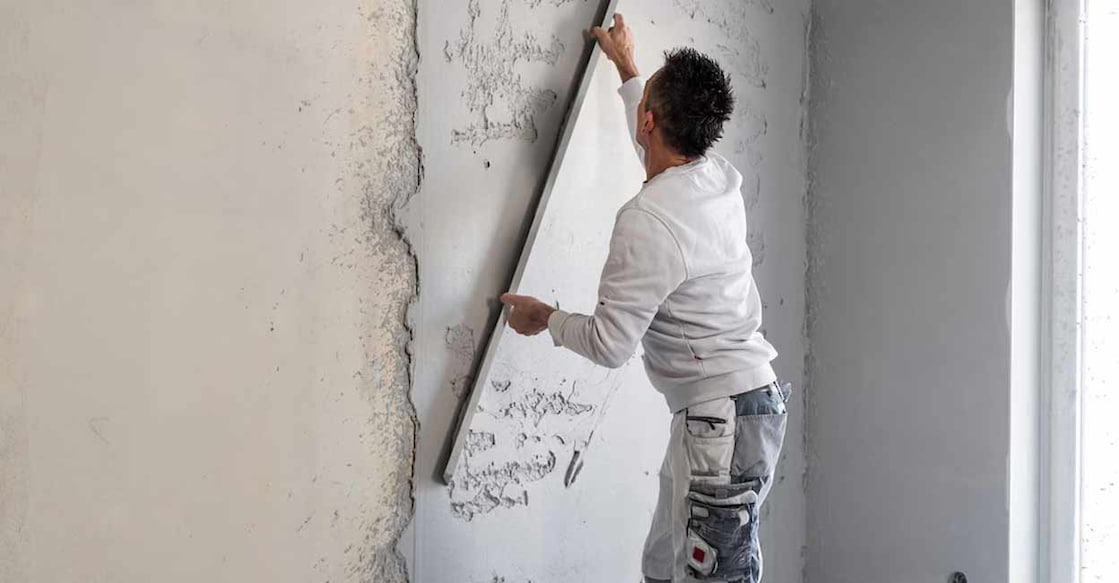This unique plastering method can reduce indoor heat, save money

Mail This Article
The scarcity and rising costs of natural building materials are prompting consumers to seek alternative options. Significant changes have occurred in wall plastering, which was traditionally done using cement, sand, and water. The unavailability and high price of sand are leading consumers to explore alternative materials like M Sand. Gypsum powder is a material that is increasingly being used for plastering today.
Gypsum plastering involves applying a mixture of gypsum powder and water to the walls, eliminating the need for cement and sand. Putty application is not required before painting on gypsum-plastered walls. Another advantage of this cost-effective and high-quality method is that it provides a more aesthetically pleasing finish compared to cement plaster. Gypsum plastering results in a smooth, white surface. It can be applied to any surface, including cut stone, brick, concrete block, interlocking brick, and ceilings.
Gypsum plaster sets much faster than cement, eliminating the need to wet the walls after plastering. Once the moisture from the plastered walls has dried completely, any type of paint can be applied. Painting becomes even easier if white is chosen as the wall colour. Such surfaces also offer better paint coverage.
Ready-to-plaster machines are also available in the market. Their advantage is the ability to plaster quickly and evenly. However, it's crucial to employ experienced workers to minimize waste.
It's important to note that gypsum plastering is not recommended for exterior walls or walls in areas prone to moisture. Additionally, there's a higher chance of it chipping away if applied to corners.
Gypsum plastering: Advantages
- Significantly reduces indoor heat: Gypsum plastering can reduce heat by 50-80% compared to cement plastering.
- Energy efficiency: Its low thermal conductivity can lead to electricity savings and energy conservation.
- Crack resistance: The likelihood of cracks appearing on the walls after plastering is lower.
- Health-friendly: Gypsum plastering does not contain any harmful components.
- Fire resistance: The high crystal water content in gypsum enhances its fire resistance. In the event of a fire, gypsum can act as a protective barrier for block work and concrete.
- Acoustic properties: As an acoustically sound material, it facilitates a better music-listening experience within the building.
- Pest resistance: Gypsum plastering resists attacks from pests and termites.

